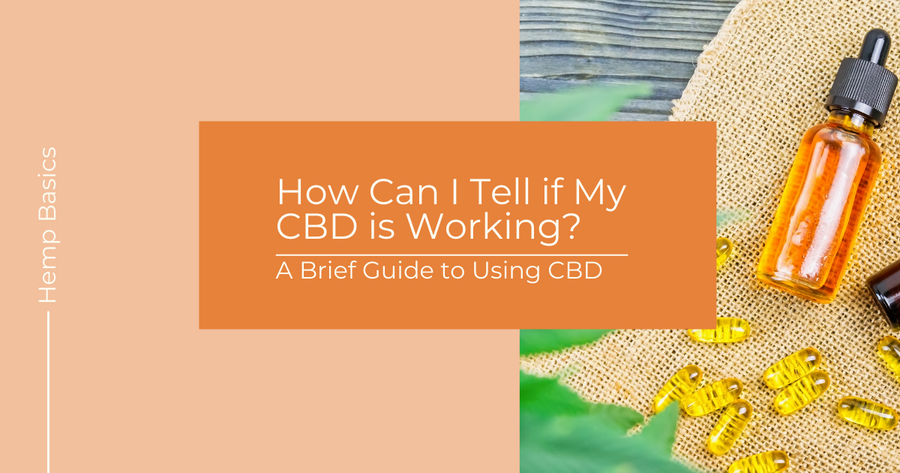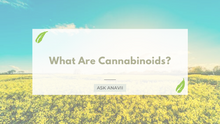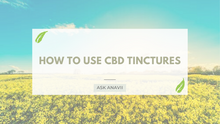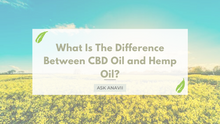If you’re curious about where does CBD come from, just know you’re not alone! This is a question people ask us often.
As your reliable source for all things CBD oil, Anavii Market put together this guide to help you answer, where does CBD come from?
What is CBD Oil and Where Does it Come From?
We sincerely hope that by the end, you are able to respond to the challenging question about where does CBD come from?
If you’re wondering where does CBD come from, we’re here to tell you it’s a bit more complicated. CBD oil comes in a variety of forms. For example, there are CBD oil extracts, capsules, topicals, soft gels, edibles, gummies, and more.
Before knowing where does CBD come from, it’s necessary to first know what CBD is. That said, CBD, short for cannabidiol, is a chemical compound that lives in cannabis sativa plants. CBD oil, though, is actually a concentrated extract from the cannabis sativa plant.
Producers extract CBD from certain cultivars or varieties of cannabis. Specifically, manufacturers and growers of CBD extract it from hemp cultivars which, due to federal regulations, contain no more than 0.3% THC by law.
CBD is only one of more than a hundred identified compounds, called cannabinoids, in the cannabis plant. CBD is actually the most prominent cannabinoid in hemp; however, more recently plant breeders have started to intentionally breed hemp for other non-intoxicating cannabinoids like CBG and CBC. In high CBD genetic plant varieties CBD makes up 65% or more of its extracts. The remainder of the material in the extract includes other cannabinoids, terpenes, chlorophyll, vitamin E, and other plant nutrients.
CBD and other non-intoxicating cannabinoids like CBDA, CBG and CBC, are not to be confused with THC. THC, or tetrahydrocannabinol, is the most abundant chemical compound in cannabis that we know today as "marijuana." More importantly, THC is known for its intoxicating properties that is responsible for the “high” marijuana users experience.
So, even though CBD is entirely different from THC and CBD is non-intoxicating, meaning it doesn’t get you high, there is still plenty of stigma surrounding hemp and its compounds like CBD. It seems as though this is due to the fact that people are confusing CBD for THC.
While this confusion is understandable, people should definitely not have any fear. We hope that by educating the general public about where does CBD come from, they will feel more comfortable giving it a try.
Where Does THC Come From?
It is not surprising that there is confusion between CBD and THC because their chemical structures are very similar. In fact at a glance, in its raw form, CBD and THC look the exact same. This is why it took scientist so long to understand that they were different! THC is primarily found in high concentrations in the flowers of the cannabis plants that US culture refers to as marijuana.
Scientifically, THC and cannabinoids like CBD are found in what are called trichomes, which to the naked eye, give cannabis plants the sparkly look. These trichomes are most abundantly found in the female flowers of the plant, but can extend into the leaves of the plant.
Interested in learning more about THC and CBD? Click here to read more!
Where Does CBD Come From?
Similarly, CBD comes from female cannabis crops, in both hemp and marijuana, but is found more abundantly in hemp than marijuana. Like THC, CBD is also found in the trichomes of the hemp plant which are most prevalent in the flowers.
Some people believe that hemp found in CBD comes from the seed, stalk and leaves of the plant.
While this is technically accurate, CBD found in these locations is too inefficient and expensive to extract.
Some people confuse where CBD comes from in hemp because European methods for growing CBD are quite different than how we grow CBD in America. In Europe, the hemp fiber market is abundant, and therefore the crops are grown for fiber, where the hemp fields have thin stalks.
As the fiber grows past its peak strength, the energy from the stalk starts to push into the tops of hemp where the flowers and seed or grain grow. The nutrients from the plant then start to produce flowers and trichomes which house cannabinoids like CBD. The plant is then quickly harvested before the male plants pollinate the female plants, creating seed in place of the cannabinoid-rich flowers.
These cannabinoids found in harvested material grown for the dual purpose of fiber and CBD contain a low concentration of CBD, usually around 2%.
Historically, farmers grew hemp for industrial purposes, for fiber and seed, for applications like rope and paint varnishes. Like the European method, farmers would often dual-harvest the plant material selling the fiber into markets for wartime efforts and simultaneously harvest the flower and sell the floral material to pharmaceutical companies.
Today, in America, hemp is grown to look more like marijuana, which is why people often confuse the two plants. The plants look alike because they are both cannabis species, and are both grown for the flower where CBD and THC are produced. However, the two varieties have different functionalities because they are grown for different cannabinoids.
Instead of thin stalks with small flowering tops like can be found in European hemp, US grown hemp is bushy, with thick stalks that can support their heavy female flowers (or colas). Growing hemp in this way allows for increased CBD concentrations, normally between 8% to 15%, which provides increased revenue for farmers and is more efficiently extracted in the pilot scale extraction facilities available in the United States.
Overall, CBD comes from the flowers of the hemp plant and is most abundant in the plant when grown for all female plants. Beyond that, the concentration of CBD in the plant depends on the cultivars or genetics that a farmer is using, as these ratios can vary greatly. In addition, these ratios are essential for determining if a plant is federally legal or only legal in a medical or recreationally legal cannabis state.
Anything that contains above 0.3% THC, no matter the CBD content, is considered federally illegal.
Where Does CBD Oil Come From in History?
Using CBD to treat a variety of things is nothing new. In fact, the earliest recorded wellness use of cannabis dates back as far as 1400-2000 BC.
In the 1800s, a man named William Osler, also known as the “Father of Modern Medicine” was actually an advocate for the wellness uses of cannabis. He thought the plant was helpful in supporting discomfort relief.
In the early 1900s, another scientist named Roger Adams discovered the first cannabinoid in cannabis, which he called Cannabinol, also known as CBN. Soon after, plant breeders began to breed for these cannabinoids, creating modern day cannabis. From these findings they found that cannabis was beneficial for many other things.
Then, in 1937, Congress passed the Marijuana Tax Act, which regulated and taxed the production of hemp for industrial purposes.
Many years later hemp was lumped with marijuana under the Controlled Substances Act, criminalizing the plant and its use.
Because of this, research into the medicinal properties of cannabis was at a standstill for many years. That is, until now. Researchers have been actively studying the potential therapeutic benefits of using CBD more recently.
This is most likely due, in part, to the passing of the 2018 Farm Bill. Congress passed this legislation and it was signed into law on December 20th, 2018, removing hemp from the definition of cannabis and the FDA’s schedule of controlled substances list. This federally legalized the crop throughout the United States.
Most importantly, the bill defined hemp including its derivatives, of which cannabinoids was clearly written into law, so long as the product contains no more than 0.3% THC.
Want to learn more about the 2018 Farm Bill? Click here for more info!
Some more information that is necessary to know if you wish to answer where does CBD come from is that the Farm Bill mandated that hemp plants are legal if they contain no more than 0.3% THC by concentration.
This is another thing that typically causes people to be confused about where does CBD come from. That’s because people usually call cannabis plants hemp or marijuana, depending on the amount of THC they contain.
No matter the name, both have value and despite the need for more scientific evidence, people around the world are claiming that CBD oil has the ability to help many people.
What are all the different ways to take CBD? Click here for more info!
Where Does CBD Come From? — Learn All About CBD’s Origins From Anavii Market
If you’re interested in finding out how to answer the question, where does CBD come from, don’t worry. Our team of experts is highly trained and educated on all things CBD, including its origin.
Consider giving us a call at 502-209-8808 or Contact Us here to answer all of your questions about CBD in general or about where does CBD come from. We’d be more than happy to assist you!
We are also super excited when people want to learn more about CBD and where does CBD come from.
Educating yourself on CBD and its potential therapeutic effects is the only way to really not have fear about trying it!
The products sold on this site and these statements herein have not been evaluated by the FDA. This product is not intended to diagnose, treat, cure, or prevent any disease.









